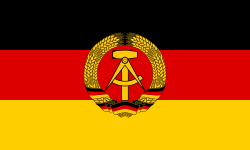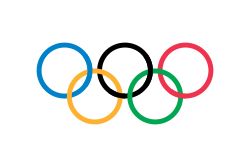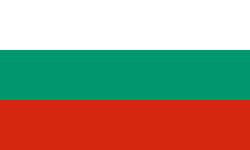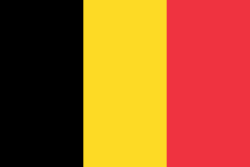Ibolya Csák
Ibolya Csák [ˈibojɒ ˈtʃaːk] (* 6. Januar 1915 in Budapest; † 10. Februar 2006 ebenda)[1] war eine ungarische Leichtathletin. Sie wurde 1936 Olympiasiegerin im Hochsprung.
Csák gewann 1936 bei den Olympischen Spielen in Berlin das olympische Finale mit einer Höhe von 1,62 m (im Stechen). Damit war sie die erste ungarische Leichtathletikolympiasiegerin überhaupt.
Zwei Jahre später unterlag sie bei den Europameisterschaften in Wien mit 1,64 m zunächst der Deutschen Dora Ratjen. Nachdem sich aber herausgestellt hatte, dass Ratjen in Wirklichkeit ein Mann war, wurde Csák der Europameistertitel sowie der Europarekord zuerkannt.
Ihr Grab befindet sich auf dem Farkasréti temető in Budapest.
Einzelnachweise
- ↑ Csák Ibolya (Kádár Lajosné). Magyar Olimpiai Bizottság, abgerufen am 13. Oktober 2021 (ungarisch).
Weblinks
- Ibolya Csák in der Datenbank von Olympedia.org (englisch)
| Personendaten | |
|---|---|
| NAME | Csák, Ibolya |
| KURZBESCHREIBUNG | ungarische Leichtathletin |
| GEBURTSDATUM | 6. Januar 1915 |
| GEBURTSORT | Budapest |
| STERBEDATUM | 10. Februar 2006 |
| STERBEORT | Budapest |
Auf dieser Seite verwendete Medien
Olympic Rings without "rims" (gaps between the rings), As used, eg. in the logos of the 2008 and 2016 Olympics. The colour scheme applied here was specified in 2023 guidelines.
The Canadian Red Ensign used between 1921 and 1957.
This image has compared for accuracy (mainly colors) using an image from World Statesmen. The only change is making the maple leaves green from red. This image has compared for accuracy (mainly colors) using an image from World Statesmen. The most recent version of this image has changed the harp into one with a female figure; see [http://flagspot.net/flags/ca-1921.html FOTW
The Canadian Red Ensign used between 1921 and 1957.
This image has compared for accuracy (mainly colors) using an image from World Statesmen. The only change is making the maple leaves green from red. This image has compared for accuracy (mainly colors) using an image from World Statesmen. The most recent version of this image has changed the harp into one with a female figure; see [http://flagspot.net/flags/ca-1921.html FOTW
US Flag with 48 stars. In use for 47 years from July 4, 1912, to July 3, 1959.
Flag of Hungary from 6 November 1915 to 29 November 1918 and from August 1919 until mid/late 1946.
Die Staatsflagge der Deutschen Demokratischen Republik, vom 1. Oktober 1959 bis 3. Oktober 1990
Olympische Flagge
Russian Olympic Committee flag
Flag of Romania (24 September 1952 - 21 August 1965)

Construction sheet of the Flag of Romania as depicted in Decree nr. 972 from 5 November 1968.
- l = 2/3 × L
- C = 1/3 × L
- S = 2/5 × l
Flag of South Africa, used between 1928 and 1982. It is identical to the 1982 to 1994 version except that the shade of blue is darker. It is also known as the "Oranje-Blanje-Blou".
(c) Bundesarchiv, Bild 183-G00985 / CC-BY-SA 3.0
Scherl Das sind die besten Hochspringerinnen der Welt Zwischen den Staffelkämpfen, die das Hauptprogramm des letzten Leichtathletiktages der XI. Olympischen Spiele am Sonntag bildeten, wurde mit dem Hochspringen der Frauen noch eine technische Uebung entschieden. Olympiasiegerin wurde dabei Ibolya Csak-Ungarn (links), Dorothy Odam-England errang die Silberne Medaille und die Deutsche Elfriede Kaun (Mitte) die Bronzene. Alle drei erreichten die Höhe von 1.60 m und erst der Stichkampf entschied den Sieg. Scherl Bilderdienst, Berlin 9.8.1936
Abgebildete Personen:
- Kaun, Elfriede: Hochspringerin, Deutschland
- Csak, Ibolya: Hochspringerin, Ungarn
- Odam, Dorothy: Hochspringerin, Großbritannien
















